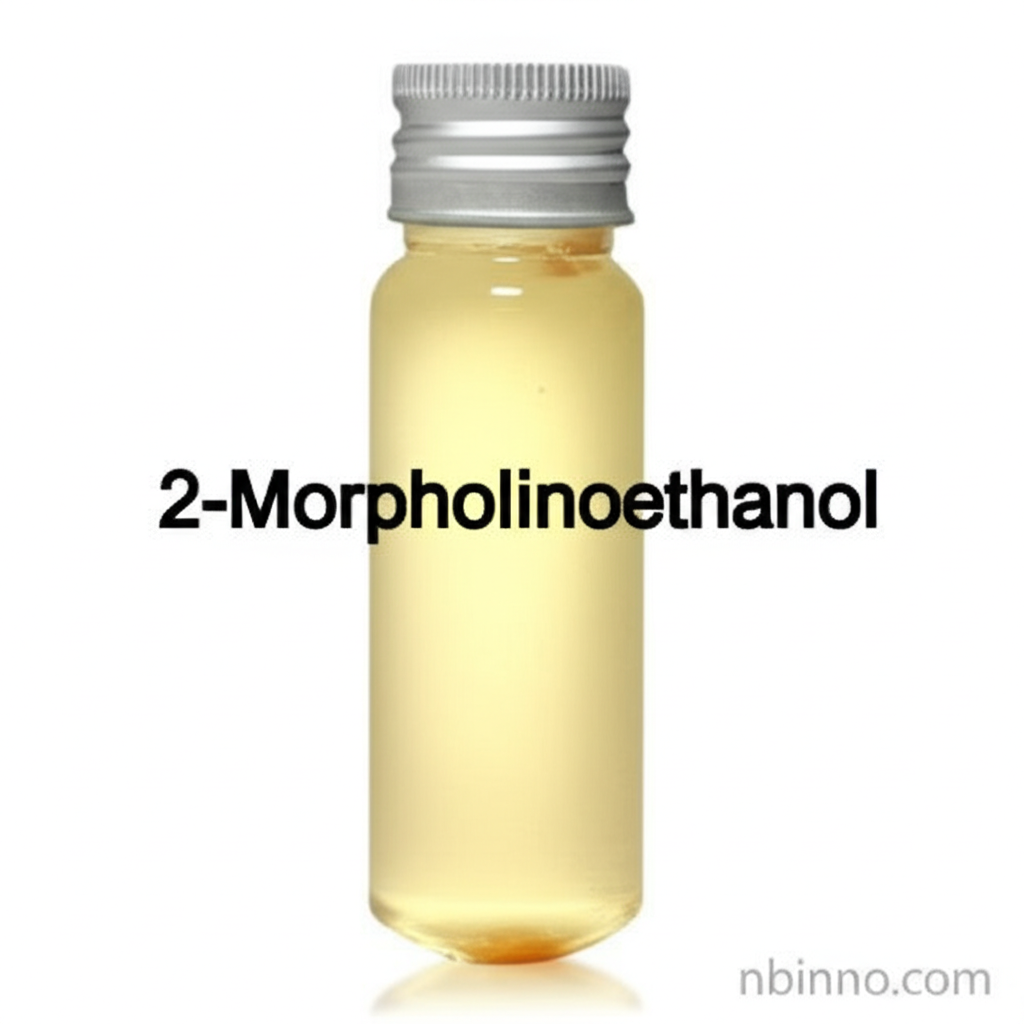2-Morpholinoethanol (CAS 622-40-2): A Versatile Organic Chemical for Pharmaceutical, Cosmetic, and Industrial Applications
Discover the key properties and diverse applications of this essential organic chemical intermediate.
Get a Quote & SampleProduct Core Value

2-Morpholinoethanol
2-Morpholinoethanol, identified by CAS 622-40-2, is a highly versatile organic chemical widely recognized for its utility across multiple sectors. Its clear, colorless to pale yellow liquid appearance and excellent solubility in water and most organic solvents make it an ideal ingredient in complex formulations and synthesis processes. As a trusted chemical supplier, we ensure high purity and consistent quality to meet stringent industry demands.
- Leverage the power of 2-Morpholinoethanol pH regulator in various formulations, ensuring optimal performance and stability.
- Explore the extensive CAS 622-40-2 applications, from personal care to advanced industrial processes, showcasing its broad utility.
- Utilize this compound as a critical pharmaceutical intermediate synthesis, facilitating the creation of essential medicines.
- Incorporate it as a precursor for corrosion inhibitors, providing enhanced protection in industrial environments.
Key Advantages
Exceptional Purity and Quality
Benefit from high-purity 2-Morpholinoethanol, essential for demanding applications like pharmaceutical synthesis and ensuring reliable results.
Broad Application Spectrum
This compound serves as a vital polyurethane catalyst, a textile dyeing agent, and a metalworking fluid pH stabilizer, demonstrating its wide applicability.
Enhanced Formulation Performance
As a cosmetic raw material, 2-Morpholinoethanol acts as an emulsifier and buffering agent, improving product texture and efficacy.
Key Applications
Pharmaceuticals
A vital component in organic chemical synthesis, serving as a building block for active pharmaceutical ingredients (APIs).
Cosmetics & Personal Care
Functions as an emulsifier and buffering agent in products like shampoos, creams, and lotions, enhancing stability.
Industrial Processes
Used as a catalyst in polyurethane production and as a pH stabilizer in metalworking fluids and coatings.
Textile Dyeing
Its water-soluble properties make it valuable in textile dyeing processes, contributing to efficient coloration.
